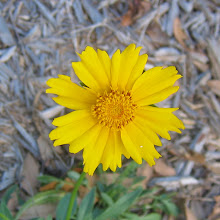 Because I regretted very much not to buy enough sardines last time when I got only 4 sardines (fried sardines with horta), I swore myself I would buy ENOUGH next time. Unfortunately I had not seen them in any fish markets since then. Yet, finally I found them. They were from Portugal and looked OK. So I ordered 20 good-looking sardines. Then, a lady waiting to be served next to me in the fish market suddenly approached me and asked me how I cook sardines.
Because I regretted very much not to buy enough sardines last time when I got only 4 sardines (fried sardines with horta), I swore myself I would buy ENOUGH next time. Unfortunately I had not seen them in any fish markets since then. Yet, finally I found them. They were from Portugal and looked OK. So I ordered 20 good-looking sardines. Then, a lady waiting to be served next to me in the fish market suddenly approached me and asked me how I cook sardines.“I have never tasted or cooked this fish,” the lady, around age 60, said.
“It is very good. You can fry them.”
She said, “Oh, I don’t eat fried fish.”
She seemed health conscious.
“You can bake them, too,” I suggested.
She smiled and ordered 2 good-looking ones. At that time, I also decided to bake the half of the 20 sardines I purchased. This dish, sardine casserole, is very easy to prepare. Other fish fillets, such as red snapper, cod, sea bass and drum fish, can be used equally fit for this dish.
2 cups panko (bread crumbs)
Salt and freshly ground black pepper
¼ cup finely chopped flat leave parsley
2-3 cloves of finely chopped garlic
Salt and freshly ground black pepper
¼ cup finely chopped flat leave parsley
2-3 cloves of finely chopped garlic
½ cup extra virgin olive oil
Lemon juice
Directions:
1. Preheat the oven to 420 F degrees.
2. Remove guts, gills, scales and backbones of the sardines. Wash the sardines well.
2. Remove guts, gills, scales and backbones of the sardines. Wash the sardines well.
3. Season the sardines with salt and pepper both side.
4. Put the panko, parsley, garlic, salt and pepper in a bowl and mix well.
5. Coat the sardines with the panko mixture and place on a casserole pan.
6. Put the rest of the panko mixture over the sardines. Sprinkle the olive oil.
7. Bake in the preheat oven for about 20 minutes.
4. Put the panko, parsley, garlic, salt and pepper in a bowl and mix well.
5. Coat the sardines with the panko mixture and place on a casserole pan.
6. Put the rest of the panko mixture over the sardines. Sprinkle the olive oil.
7. Bake in the preheat oven for about 20 minutes.
8. Transfer to serving plates and sprinkle olive oil and lemon juice. Enjoy it!











 The best way to prepare this dish is baking eggplants in a traditional Mediterranean wood fired oven, which my husband and I plan to build in our garden sometime soon. In the oven, eggplants are cooked slowly and evenly. Eventually they become very soft like butter with an amazing natural wood flavor. Cooking eggplants in a fireplace using real woods or grilling them with wood charcoal can be as good as baking in a Mediterranean oven. Unfortunately, it is already too hot to use a fireplace. Also I am lazy to cook it outside on a charcoal fire. Therefore, I have no choice but to use my electric oven to prepare this dish. Nevertheless, it is still gorgeous! One more point attention: it might be a good idea to penetrate it with a fork or a thin knife so vapors do not built up during the baking process. Some people wrap them in aluminum foil so they will not burn. This is a must if you use a fireplace to bake them but optional for regular ovens.
The best way to prepare this dish is baking eggplants in a traditional Mediterranean wood fired oven, which my husband and I plan to build in our garden sometime soon. In the oven, eggplants are cooked slowly and evenly. Eventually they become very soft like butter with an amazing natural wood flavor. Cooking eggplants in a fireplace using real woods or grilling them with wood charcoal can be as good as baking in a Mediterranean oven. Unfortunately, it is already too hot to use a fireplace. Also I am lazy to cook it outside on a charcoal fire. Therefore, I have no choice but to use my electric oven to prepare this dish. Nevertheless, it is still gorgeous! One more point attention: it might be a good idea to penetrate it with a fork or a thin knife so vapors do not built up during the baking process. Some people wrap them in aluminum foil so they will not burn. This is a must if you use a fireplace to bake them but optional for regular ovens.



 Ingredients:
Ingredients:

 Ingredients:
Ingredients:












